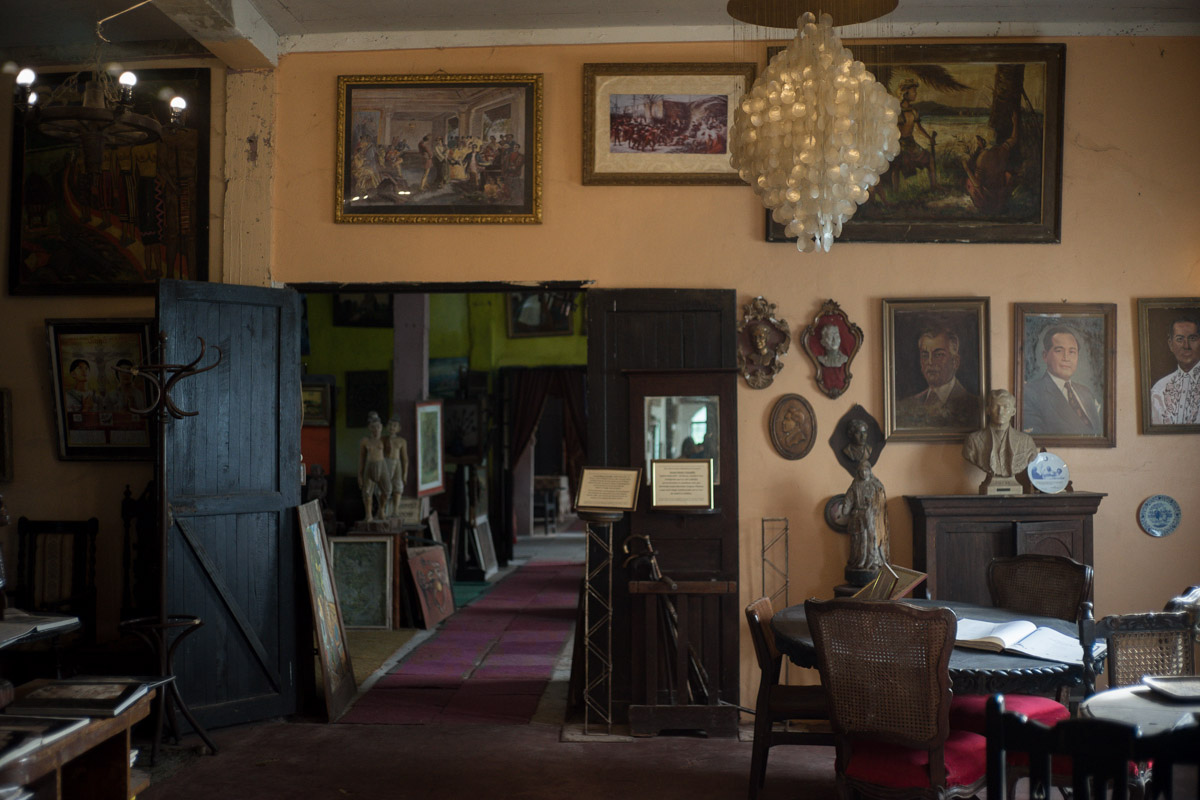Image may be NSFW.
Clik here to view.
All I wanted was to take a breather from the metro.
A week-long holiday brought me to the landlocked province of Abra. Not much is heard about the province, but a quick Google search on what it has to offer drew me to its rolling hills and majestic waterfalls.
Unfortunately, the weather did not cooperate, so I looked for something else to do. People I met during my trip claimed that Filipino heroine Doña Maria Josefa Gabriela Cariño Silang or Gabriela Silang was a native of what is now known as Pidigan town in Abra.
When her husband Diego Silang was murdered in 1763, she fled to the house of her paternal uncle Nicolas Cariño in Tayum to hide from the Spanish forces.
The house then served as her headquarters where she reorganized her husband's loyal troops, with the help of his uncle.
The house is still occupied by Nicolas' descendants, but another two-story house in the same compound has been converted into a museum and art gallery by a 5th generation descendant, retired ambassador Rosario Cariño.
We packed our bags and headed to the Gabriela Cariño-Silang Gallery of Fine Arts, roughly 12 minutes away by tricylce from the capital Bangued.
Image may be NSFW.
Clik here to view.
Image may be NSFW.
Clik here to view.
Gabriela Silang Room
Museum curator Rosarito Cariño, the son of the retired ambassador, gave us a tour of the gallery. He told us that they recreated Gabriela Silang's room. Save for the paintings, everything inside the dimly-lit room, from muebles to clothes, were used by the heroine.
Image may be NSFW.
Clik here to view.
Image may be NSFW.
Clik here to view.
Image may be NSFW.
Clik here to view.
Image may be NSFW.
Clik here to view.
Tour of Casa Museo Cariño
According to Rosarito, his father put up the museum after his mother died in 1993.
"It was like the Taj Mahal of my father," he told us, referring to the white marble mausoleum commissioned by Mughal emperor Shah Jahan for his favorite wife Mumtaz Mahal, in India.
He said that his father wanted the museum to be a monument of his love for his mother.
Image may be NSFW.
Clik here to view.
The museum also dedicated an entire section of the house to trace the family's roots.
But more than that, the museum seemed like it was suspended in time, during the glory days of Ambassador Cariño. The big halls could host perhaps a hundred people at a time for socials. The dining room had more than a hundred pairs of utensils for guests.
The house originally had only two sections, Rosarito said, but another two sections were added when the house was expanded.
Image may be NSFW.
Clik here to view.
Image may be NSFW.
Clik here to view.
Image may be NSFW.
Clik here to view.
The museum is an art trove, with several paintings and artifacts acquired by Ambassador Cariño during his days as a diplomat.
Some were gifts to him, while a section on the ground floor of the house featured his own paintings.
Image may be NSFW.
Clik here to view.
Image may be NSFW.
Clik here to view.
Under 'renovation'
The place is currently under renovation but the Cariños allowed guests from time to time, as long as a member of the family was in the house.
Rosarito said that they had to be open still, to fund small restoration efforts like replacing frames for the paintings which he planned to be done by yearend.
The current environment would not do good for many of the exposed paintings, some already with sides chipped off and covered with dust and cobwebs.
This is in stark contrast to the recently restored Cariño House in Candon, Ilocos Sur, the ancestral house owned by Gabriela Silang's father.
Image may be NSFW.
Clik here to view.
Image may be NSFW.
Clik here to view.
Image may be NSFW.
Clik here to view.
Asked how much it would cost them to restore everything in one go, Rosarito answered with a grin, "Millions."
As of now, his father wants to keep the place as is, as long as he is alive, according to Rosarito. The retired ambassador is 90 years old and still lives at the ground floor of the house.
The hope is for the museum to be fully restored in the next decade. I told myself I'll be back no matter what.
But absent the precious repairs in the coming years, the gallery may be lost in the mist of time. – Rappler.com
Image may be NSFW.Clik here to view.